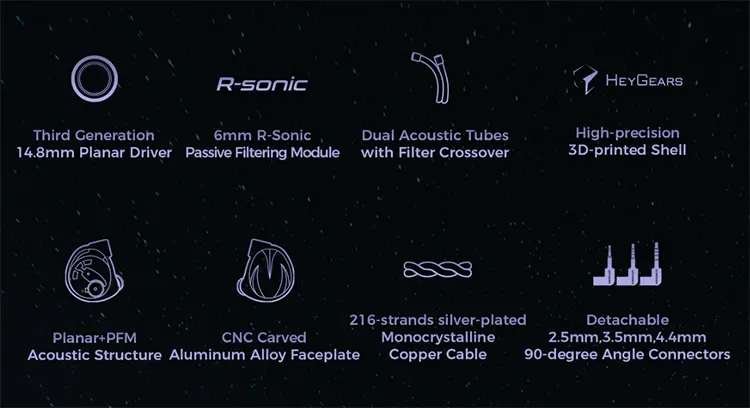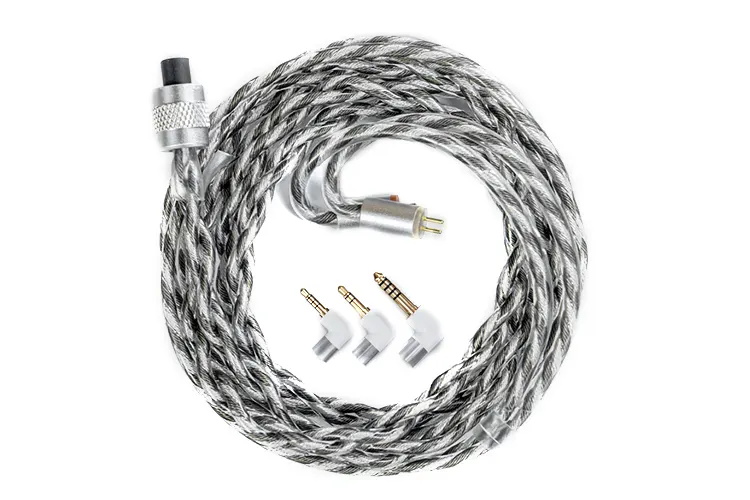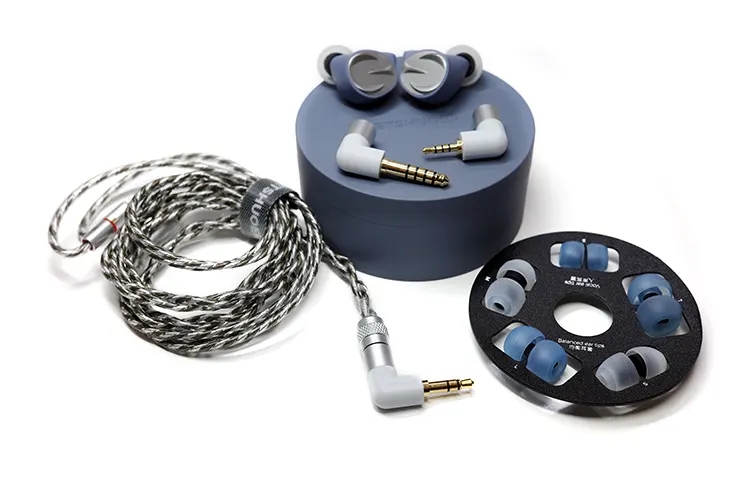In this feature, we review the LETSHUOER S15, which is a 3rd generation 14.8mm planar driver universal IEM with a detachable plug cable system. It is priced at $329.
Disclaimer: This sample was sent to us for our honest opinion. Headfonics is an independent website with no affiliate links or status. We thank LETSHUOER for their support
To read more about LETSHUOER products previously tested on Headfonics click here.
Note, that this article follows our latest scoring guidelines which you can read here.
Since the earlier introduction of the Tape, LETSHUOER has taken a step back, re-evaluating the direction they want to go and providing the products with not only more refinement in sound but quality control as well.
That process led to the launch of the successful S12, followed by the subject of today’s review, the new LETSHUOER S15 universal planar driver IEM, priced at $329.
That is a step up in price over the S12 but this seems to correspond to several improvements in the S15 over the older model. If the S12 is any indication, the S15 should provide a fairly smooth and engaging character.

Tech Highlights
Running the new 3rd generation 14.8mm planar driver unlike the first generation used in the S12, the S15 adds a proprietary 6mm R-Sonic filter inside to further enhance the tuning.
While some manufacturers allow interchangeable filters, LETSHUOER placed the R-Sonic inside, precisely placing it after the planar driver to optimize tuning.
While it does not have the same effect as a changeable user filter, the result combined with the dual acoustic tubes and a cross-over filter makes for a definitively different sound than the S12.
The S15 is rated at 30Ω, with a sensitivity of 106 dB @1kHz mW making for a fairly easy-to-drive unit, with good response to changes in the sound. This will allow use with modern DAPs since it comes with three jack options, too.

Design
The S15 chassis is 3D-made from a resin, which looks quite good in the blue provided. While it does feel plasticky, the tactility is very good.
There are two vent holes on the inside, and one on the back, allowing for some flexibility in bass response. The faceplate mimics the company logo (for the S15) and is made out of anodized aluminum.
The look of matte/semi-gloss is understated and elegant. Complimenting the silver of the 2-pin insertion, the faceplate ties the two together.
The nozzle is 3D printed and inserted into the main shell. It also carries a mesh filter over the top to keep debris out. I found putting the tips on is quite easy.
The inner sleeve tube of each tip is longer, which to me makes it easier to put them on and take them off. I never worried about tearing that sleeve like I have on some other tips in the past. The S15 is average in size, and I had no issues wearing the unit for long periods.
The 0.78mm 2-pin connection is a bit hard to fully mount, but with careful force, the 2-pins are inserted completely. I would have liked a bit less pressure for inserting the 2-pin into the shell, but I can say that I have never bent quality 2-pins such as these.

Comfort & Isolation
Using the included medium-sized tip to start, I quickly realized that the large size worked better for me. Not that the medium was uncomfortable, but they provided less isolation than the large. The S15 stayed in place as well, using either tip.
The S15 never felt heavy (at least the IEM didn’t) either; with the ear guide providing ample support without too much pressure. I would not call it pliable, but comfortably taut. As a result of this, I was able to use the S15 for long listening periods without bother.
Tips
LETSHUOER included six sets of tips (including the mounted medium pair) with the S15 in either “vocal” or “balanced.” The vocal tips had a larger bore, with a slightly shorter tube.
I found the large balanced tips worked best for me, due to my high-frequency intolerance for long periods. The vocal tip was quite good too, but I could not use it for extended periods.

Stock Cable
Much like LETSHOUER saw the opportunity to let users choose between a single-ended 3.5mm connection or a 4.4mm balanced terminal on the S12; the S15 adds a 2.5mm balanced option.
Having two balanced options is nice since many DAPs have one or both of these options. Plus, the added power most often derived from the balanced output on DAPs makes for a thoroughly enjoyable sound.
Adding two-thirds more stranding to the cable helps, what with the 216 strands of silver-plated mono-crystalline copper. The cable mixes black and silver, for quite the look, while staying pliable. I had no problems with tangling, either. It is a bit heavy though.
Packaging & Accessories
The packaging on the S15 reminds me of my Empire Ears Legend X box, complete with a slide-out “jewelry” drawer. Sliding the paperboard sleeve off, you find the box, which has a flip-style lid reminiscent of that jewelry box. Under the lid is an envelope containing all the necessary manual material.
Under the envelope in a protective pull-out package are the IEMs, with a set of tips mounted. Sliding the drawer out you find the 3D printed case on one side and the three jack connections on the other.
The case has excellent tactility to it, and inside you have room to keep the tips on their “disc” as well as the S15 with the cable attached.
A nice feature is a cutout below the drawer, which allows you to push the case out of its pocket without bother since it is mounted quite snuggly in its place. I appreciated the detail LETSHUOER went to protect the contents.
Sound Impressions
All listening was done with either the balanced or vocal tips in the large size. Impressions were made using the 3.5mm single-ended jack on the Cayin N6ii, while the 4.4mm balanced jack was used on the Shanling M6 Pro.
Summary
The 3rd generation planar driver in the S15 allowed for a bit of rumble down low, with an even tonality to it, coming across as mature, but on the slower side. Good details emanate from the midrange, providing an airiness, which allows for good spatial representation, countering the slow decay of the bass notes.
This also adds good texture to the notes, since the punctuality from those mids carries into the treble region, giving songs good clarity.
There is not too much bite up top either, making for that overall maturity in the signature. Resolution remains very good, despite the somewhat smooth signature, due to the excellent midrange.
Timbre
The S15 provides the listener with accurate timbre, especially with the midrange helping pull the realism out. Bass provides a nice decay, slowing the music down, without becoming drippy or inaccurate.
Texture comes about due to the thickening of notes, but the accuracy mentioned above makes for a detailed listen that does not become sterile or analytical.
That accuracy leads to wonderful vocal treatments when playing music with female singers, and I do not hear the somewhat usual “flattening” of planar signature sounds.
The depth (thickness) of notes provided by the sub-bass subscribes to a veritable foundation when combined with the nicely weighted upper reaches to provide a well-rounded signature.
The sweetening of the signature combines to make a somewhat mature sound, with enough verve (accurately presented) to provide good, but not great resolution.
Imaging
That resolution provides decent accuracy and depth, even with the lengthened lower regions and vibrant upper regions.
Some have posited a drop-off in the upper region, but to me; the resulting smoothness adds to the maturity of sound I spoke of earlier, without becoming harsh or boring (both extremes).
The resulting signature does not provide the most detailed sound, but the laid-back nature works well for classical, jazz, and female vocal presentations.
Tightening the lower regions would aid in accurately placing instruments and the overall character, but I feel the warmth lost in doing so would be a trade-off. Regardless, the instrumentation is still accurate if a bit fuzzy.
Soundstage
There is a good spaciousness to the S15, bounded by width and height, but less depth. The height is aided by the midrange moving up, which could be perceived or due to the push-up of a few dB’s.
Due to the depth (less than width and height), imaging suffers a bit, but there is still good placement within the listening sphere.
I find picking instrument locations out to be fairly easy, but on complicated pieces, the S15 does suffer a bit. This could be due to the slower decay of the bass, overriding the signature a bit.
Better layering allows the textural response of the music to show through in a smoothness, which equates to the “typical” planar sound of many predecessors.
There is a bit of rumble when called upon, which to me lowers the floor, adding to the height of the stage. This enhances the layering as well, making for the equivalent of a lowered orchestral pit lending its music to our ears.
The resolution renders the definition of notes as texturally strong and defined. The clarity of note is enhanced a bit as a result.
You can understand the cacophony of listening perplexities I am having as a result of these seemingly opposed responses. Smooth, yet refined with detail adds to the textural response.
Click on page 2 below for our recommended pairings and selected comparisons.



